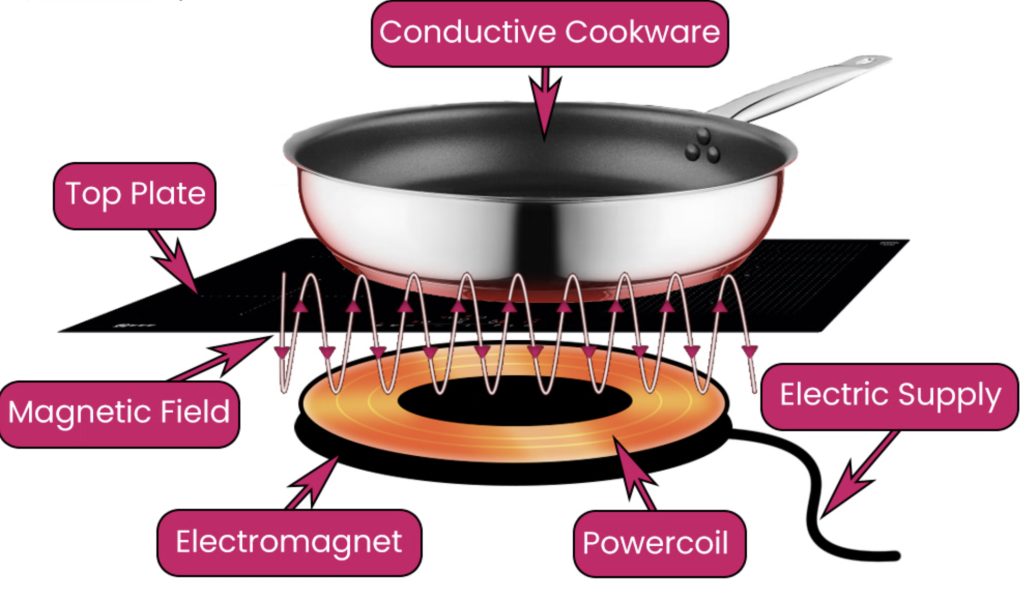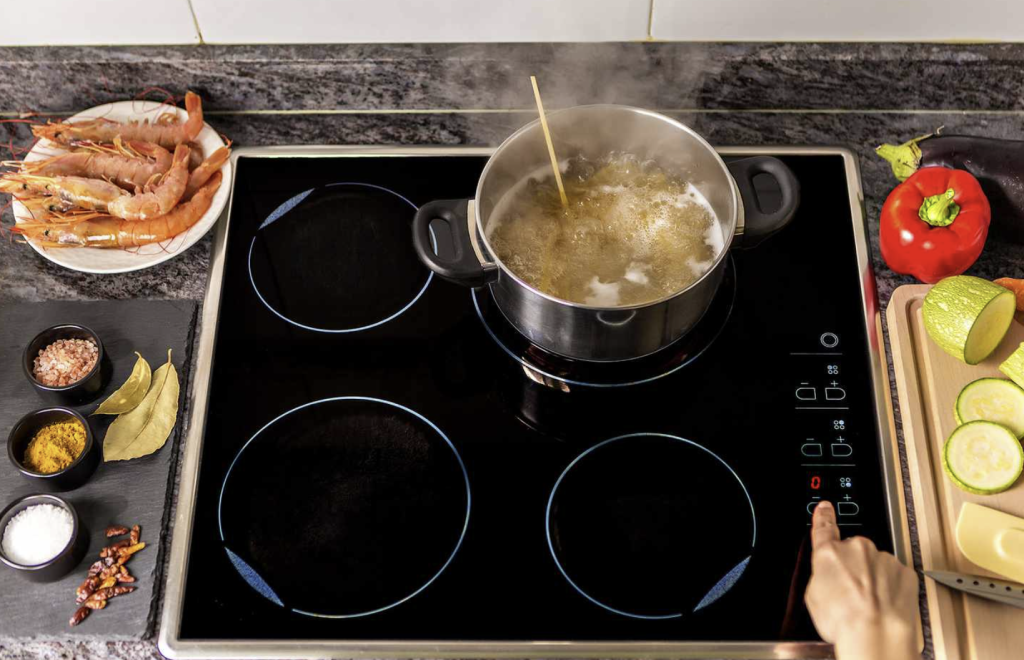An induction stove works by using electromagnetic energy to directly heat cookware, rather than heating the stove surface itself. Here’s a breakdown of how it works:

- Electromagnetic Field: When the induction stove is turned on, an alternating current flows through a copper coil located beneath the stove’s cooking surface. This current creates a magnetic field.
- Induced Heat: When a pot or pan with magnetic properties (usually made of ferrous metal, such as cast iron or stainless steel) is placed on the stove, the magnetic field induces electric currents (called eddy currents) in the base of the cookware.
- Resistance Heating: The eddy currents flow through the metal of the cookware, causing the metal to resist the flow of electricity, which generates heat. This heat is then transferred to the food inside the pot or pan.

- Efficient and Fast: Since the heat is generated directly in the cookware, it is more efficient than traditional electric or gas stoves, which heat a burner and then transfer the heat to the pot. This makes induction cooking faster and more energy-efficient.
- Cooktop Surface: The surface of the induction stove stays relatively cool because it only gets heated indirectly by the cookware. The stove surface may feel warm because of heat transferred from the cookware, but it won’t get as hot as a traditional stove.
Induction cooking is precise, energy-efficient, and offers more control over the temperature compared to other methods. However, it requires cookware that is magnetic (i.e., a pan that can attract a magnet).
